Run Moore’s website had run its course and Steve Moore, owner of the run specialty shop in Westminster, MD, knew it.
Last updated in 2020, the Run Moore website was dark and static. It included images with discontinued footwear lingering in the background – a sign Moore feared might suggest his business wasn’t paying attention to the details. It also lacked continuity with Run Moore’s other digital channels, including its Instagram feed and its increasingly prized YouTube channel. Most of all, the website didn’t match the current vibe of Run Moore’s Main Street store.
“As we changed and evolved, our website became antiquated to who we were in 2025,” Moore says.
In today’s uber-competitive environment, Moore knows a store website needs to look polished and energizing, especially since it’s frequently a consumer’s first touchpoint with a local business like his. So, he ordered an overhaul of his eponymous store’s website.
Run Moore’s new digital home is more interactive, brighter and easier to navigate. It hosts the shop’s digital magazine and shares images of people rather than product to showcase the store’s community ethos. A top-of-the-page graphic encourages people to “Run, Walk, Hike, Live Moore,” five carefully selected words spotlighting the store’s ability to service runners and non-runners alike.
“It feels like we’re the hometown store extending our hand and saying, ‘Welcome to our shop,’” Moore says. “We’re setting the expectation that we’re a friendly, helpful and attentive business before people even walk in our door.”
Websites That Resonate
For local run specialty shops, the website serves a vital role. It provides customers key information like location and store hours. It highlights available products and, for many running stores, captures sales. It fuels credibility and trust with prospective customers. It fosters community by connecting people to store events, races and the store’s social media ecosystem.
“Your website is your brochure to the world. It’s who you are and what you’re doing,” says Rob Dietz, CEO of the Dietz Group, an award-winning digital agency that recently completed websites for run specialty shops such as Florida’s Front Running Sports and St. Pete Running Company.
While Dietz acknowledges every run shop holds a different vision for their website – “Some want to put e-commerce front and center while others want to push their events” – there are nevertheless a few ingredients virtually every contemporary, effective website shares.
1: Mobile friendly
It might seem obvious in today’s tech-charged age, one in which about half of U.S. web traffic comes from mobile devices, but Dietz still runs across store websites that don’t convert to mobile – and every website, he says, should be optimized for mobile. A mobile website delivers a cleaner user experience, enhances SEO, sparks higher engagement and drives positive brand perception.
2: The non-runner
Increasingly, run specialty shops are serving non-runners and many retailers estimate more than half of their business comes from people who do not identify as runners at all. They’re walkers, factory workers, hospitality staff, nurses and others purchasing comfortable footwear for regular wear, not running. Quickly and clearly, Dietz suggests a running store website addresses the non-runners and tones down the intimidation factor by providing easily digestible information and thoughtfully selected photos.
“The dedicated runners will know you, so make it welcoming for the non-runner first,” Dietz says.
3: The fitting process
The sit-and-fit experience is a central point of differentiation for run specialty shops and something store websites should champion. Define the particulars of the store’s fitting process, which will set expectations for each customer’s visit, and also explain why the fitting process is important and valuable.
4: A blog
Yes, a blog might seem so 2005, but it’s worthwhile for running shop websites to have one if they can do so, Dietz says. The blog – and it need not be called “blog” but rather something unique like “The Fitness Hub” – should focus on being informational, providing text and, if possible, video on running tips, injuries, local running routes and more.
Such content, Dietz says, will keep visitors on the site longer and elevate the shop’s expertise. A blog also boosts SEO, as relevant, ongoing content contributes to search rankings.
5: Social links
Considering the value of social media to marketing – promoting group runs, new products, sales, races and so on – it’s important run shops invite people into their entire digital orbit. Deitz recommends having clearly visible links to social platforms such as Facebook and Instagram on the website’s homepage to encourage connection.
Even better, stores can directly provide social media feeds, which will help the website look new and fresh without requiring operators to regularly update content.
6: Calendar
Run shops promote community, so having an easy-to-navigate calendar of events on the website helps drive community and heighten awareness. The calendar can, of course, feature store events, such as group runs and in-store programs, but it can also include other community events, such as notable races or even the Tuesday night Farmer’s Market near the store.
“This helps to boost people’s interaction with the website and makes you an even bigger resource for your customers,” Dietz says.
7: Call to action
If the website has e-commerce capabilities, as many running store websites do, then there should be a clear call to action like a “Shop Now” button on the homepage – and perhaps every page – so visitors aren’t left hunting for products.
Other calls to action might include things like a “Sign Up” button for events or group runs or a “Make an Appointment” button for customers interested in booking a shoe or bra fitting. Dietz also likes to share a “Subscribe” button if the store has an email newsletter, a still-relevant marketing tool that helps run shops build their database and practice regular communication with customers.
8: Optimized to perform
At the fundamental level, Dietz says webpages should have meta titles and meta descriptions, both of which are among the top-ranking factors for search. The homepage, for example, might feature a meta title like “Running and walking shoe store in Anytown, USA.” A meta description, meanwhile, might read something like: “The best footwear store in town, we’ve been fitting runners and walkers in high-quality footwear and helping individuals pursue their fitness goals since 1990.”
“Even basic optimization can go a long way to stimulating better results,” Dietz says.







